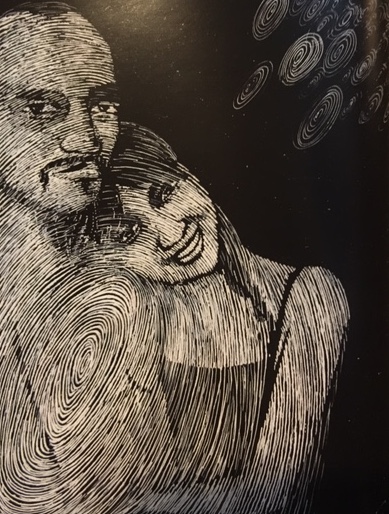Yesterday I went to the opening of the always thoughtful and provocative Frames of Representation (FoR). Now in its second year, the festival aims to support and generate dialogue around emerging practices in documentary cinema. This time round, the theme is "working". The organisers want to "explore the significance of work today and its social, political and cultural themes." It seemed apt, therefore, that the first film be called Machines, and transport viewers to a textile factory in Gujarat, India.
Here, people work in 12-hour shifts for about $3-4, many struggling to keep their eyes open despite all the humming and whirring around them. Their expressionless faces convey a mix of resignation and stoicism. As one worker says: "God gave us hands so we have to work." Another man has travelled more than 1,600km to work and denies that he is being exploited. That's because this is life and people just get on with it … until someone gives them a better option.
First-time feature director Rahul Jain spent two months observing in the factory before beginning to shoot. In all, he and his cinematographer Rodrigo Trejo Villanueva kept rolling for six months, patiently waiting for the right composition and for beauty to reveal itself amid all the drudgery and hardship. Occasionally you feel claustrophobic, at other times incarcerated within each frame.
The film affects the viewer through hypnosis as the camera lingers on each stage of the manufacturing process. Vats of deep-hued colours are wrestled into position, fabric is cut and dyed, patterns are printed, material is guided through rollers by hand and body-like bundles are dumped into wheeled bins with a jarring thud. It must have been quite a task to whittle down the 600-plus hours of footage. However, there is a real light touch to the editing, which gives Machines its metronomic rhythm and sense of suspension in time.
Despite the constant motion in this film, it feels eerily calm throughout. Perhaps that is because the wheels keep turning in this place. Product is made but little appears to be resolved. As soon as one fabric is finished, it's on to the next one without fuss or fanfare. There is no obvious satisfaction in the craft and the film really captures that process of dehumanisation. The workers have themselves become machines.
Voices are minimal in the film. In fact, it must be at least half an hour before we hear one of the workers speak. By that point, you are desperate for someone to "speak their truth" as Jain put it in the Q&A. This was a very personal film for the director, whose maternal grandfather owned a factory like this (in Surat). This world fascinated him, particularly his place in relation to it as someone of privilege. When the time came for the California Institute of Arts film student to find a subject for his mid-term, he started with the one place he knew he could get access.
Jain went into this project with questions and came out with even more. The intention was never to analyse or find answers. It certainly wasn't to produce a piece of cause marketing or start an impact campaign as some members of the audience were calling for. His honesty as a filmmaker was refreshing, particularly when admitting that he made this film because he wanted to … and nothing more. As Jain explained, it's in our nature to seek quick answers to questions. In reality, "there is no black and white," as he put it, "just this long spectrum of grey."
After the sensory overload of the first half of the film, our call for reason is partially answered as a few more voices interject. The factory boss brags about how much more loyal and hungry his workers were a few years ago when they used to earn ten times less than they do now. Towards the end, we step outside and the filmmaker is met by crowds of curious people. A spokesperson asks Jain, "Do you want to save us? Then tell us what to do and we will.” Another simply takes comfort in the fact that we all leave this planet with nothing. Even the rich people.
Admittedly, "you can't expose the sun," as the director argued, particularly in an industry that's reportedly worth $40 billion and built on the backs of cheap labourers. However, I did walk away wanting more from this film than Sundance-winning cinematography and assuming the role of voyeur in Jain's inquiry. Did that mean a stronger narrative or point of view on the situation from Jain? Or was I desperate for action which could lead to better wages and working conditions? If it's the latter then it's down to all of us as accomplices of global capitalism and not the director of a documentary.
He did tell us that he has funding to show the film for a couple of weeks in cinemas around the factory area so let's hope something positive comes from that.
Machines film will be released and distributed by Dogwoof from 19 May. It's definitely worth a look.














